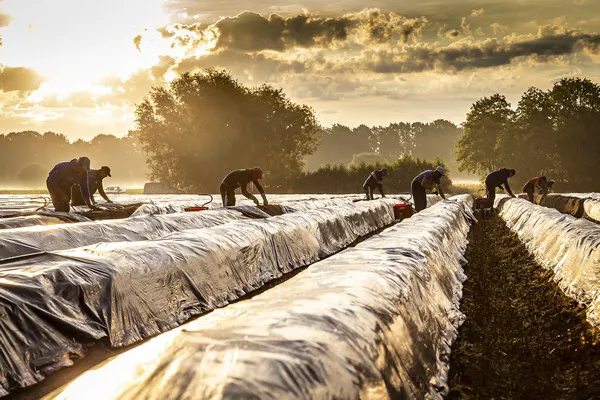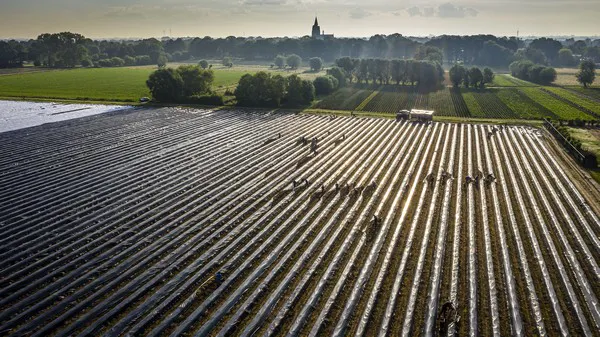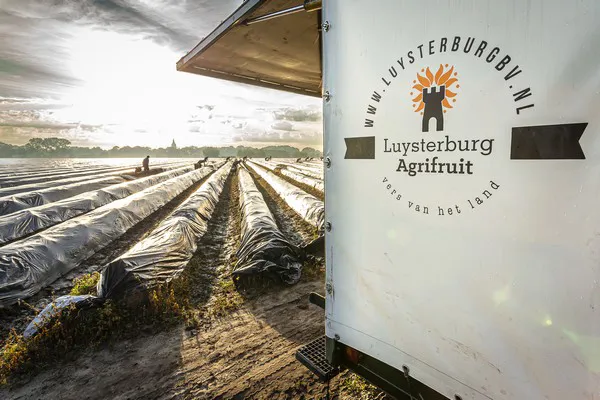The last Dutch asparagus were harvested last week. Rob Luysterburg of Luysterburg Agrifruit took some time to reflect on the 2020 season. He runs the company with his parents and twin sister. "It was a very different season," says Rob. He's been cultivating asparagus on his farm in the Netherlands since 2010.
"In March, we found ourselves in the middle of the corona crisis. But, in the weeks after that, demand increased nicely again. And there were good prices on the market. We were able to maintain these until the end of the season."

Market
"At the beginning of the year, we were anxious to see how things would go. Because of the wet weather, we could only start milling later. We got everything back on track and were about to get started. Then the corona crisis hit. Things looked very uncertain at the end of March/beginning of April."
"The hospitality industry closed, which caused prices to drop," explains Rob. "When restaurants have asparagus on their menu, it's advertising for us. Then people know they're available again. There was also just a lot of uncertainty on the market itself."
Fortunately, retailer sales picked up nicely. And everything progressed with good prices, that remained so until the end. Certainly in the last two weeks, when asparagus was going for €5 - €6/kg. These are great prices compared to last year. Then prices were at €2/kg."
"In the Easter weeks, this 'white gold' was even selling for €10+. Prices never dropped to under €3 for the grower. The biggest difference from last year was the Class II asparagus. These were worthless last year. This year, things just went that little bit better," says Luysterburg.
There were fewer asparagus available this year. That was due to multiple reasons. In the first place, there were problems with the workforce. Secondly, the dry weather played a role too.

Labor
"We were lucky. We already had quite a lot of workers on the farm when the coronavirus hit. We grow full soil strawberries too. And, at around that time, tunnels needed to be built for those. There was also planting to be done. We could, therefore, use these laborers to cut asparagus in the field."
"So, we didn't have to leave any asparagus in the field this year. That was sometimes the case with other growers, though. This resulted in some fellow farmers slowing down their crops. They were, therefore, not on the market when demand was high like around Easter," adds Rob.
Meanwhile, Rob's keeping a wary eye on the emergence of the asparagus robot. "These are nice initiatives, but it'll be nerve-wracking to be the first one to use it. The asparagus robot requires things to be done entirely differently on your farm. You must rely 100% on the robot. I'm, however, sure they'll come. We might even be riding around on one of these machines soon."
Dry weather
But Rob's primary concern is the dry weather. "There's not only less volume because of the shortage of workers. Many plants didn't grow well either. That's due to the dry weather. These problems increase year after year. We've still been fortunate."
"We've irrigated for five years already. My father invested heavily in that. That's certainly making all the difference now. Nevertheless, I worry about this development for the future. Things can't go on like this," says this farmer.

For Belgians, the price doesn't matter
Luysterburg also has a farm store. He sold far more asparagus there this year than in previous years. "You saw that people were bored," he observes. "So, they'd come to buy asparagus to make a gourmet meal. Early in the year, they have the money to spend on this too."
The Belgians are another excellent target group. "When our southern neighbors get a craving for asparagus, it doesn't matter how much they cost. They simply must have them. On the other hand, we'd profit if people in the north of the Netherlands would eat a bit more asparagus than they do now."
"That would really boost the asparagus market." Rob planted green asparagus for the first time this season. It's an experiment. "I've noticed it's becoming a hot item on the market. I'm planning to plant more next season," Rob concludes.
For more informationRob Luysterburg
Luysterburg Agrifruit
173 Herelse Street
4726 SR, Heerle, NL
Tel: +31 (0) 165 303 411
Email: info@luysterburgbv.nl
Website: www.luysterburgbv.nl
